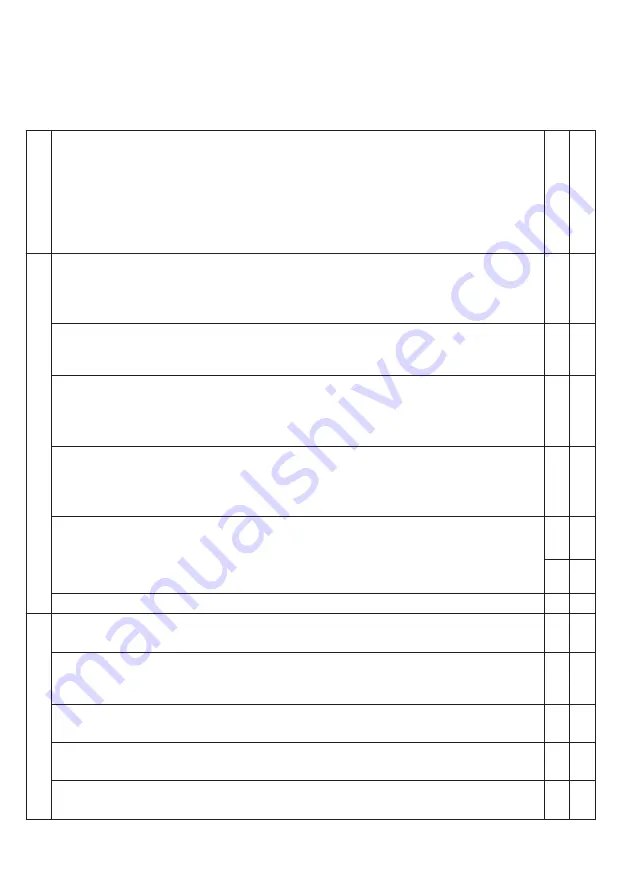
30
7.
Before and after your ride
7.1 Before your ride
To make sure your bike is safe to ride, you should carry out certain tasks before your ride. This is for your own safety in
particular, yet also for riding enjoyment. Nothing is more annoying than having a defect on a bike tour.
If there are any defects or flaws, you should have your bike inspected and repaired by a qualified bicycle mechanic.
Never ride with a defective bicycle!
Task/Check
Befor
e y
our fir
st ride
Befor
e ev
ery ride
Wheels
Check that the wheels are straight. Lift the wheels one after the other and spin them.
→
The wheels must spin smoothly.
→
The wheels must run true, without moving up and down or from side to side.
→
The tyres must not rub against the frame.
X
X
Check the wheels for play in the hubs. Lift the wheels one after the other and move the wheels to
the side.
→
There must be no play.
X
X
Check the freehub mechanism of the rear hub to ensure proper engagement:
Sit down on your bike, pull the front brake and pedal with moderate force when standing.
→
The power must be transferred to the rear wheel.
→
The freehub must not slip.
X
X
Check the tyre pressure:
The best way to check the pressure of the tyres is to use a floor pump with a pressure gauge.
→
The tyre pressure must not fall below or exceed the minimum or maximum value (see “9.3 Tyre
pressure“ on page 37).
X
X
Check the tyres for damages and wear.
→
There must be no damages.
X
→
The tyres must not be worn so that the puncture protection belt or the carcass threads can be
seen through the tread.
X
Check whether the quick-release skewers and thru axles are properly attached.
X
X
Brak
es
Check the bite point of the brakes: Pull one brake lever after the other while standing.
→
The bite point must be felt around half way down the brake lever travel.
X
X
Check the braking performance: Pull one brake lever after the other while standing and push the bike
backwards and forwards.
→
The front and rear wheel must lock when the brake lever is pulled.
X
X
Check the brake pads for wear.
→
The brake pad on the metal backing plate must be at least 0.5 mm thick.
X
Check the disc rotor for wear.
→
Minimum thickness of brake rotors: Avid: 1.55 mm, Magura: 1.8 mm, Shimano: 1.5 mm.
X
Check whether the brake hoses and connections are losing brake fluid and check them for defects.
→
Brake fluid must not escape at the connections.
X
X









































